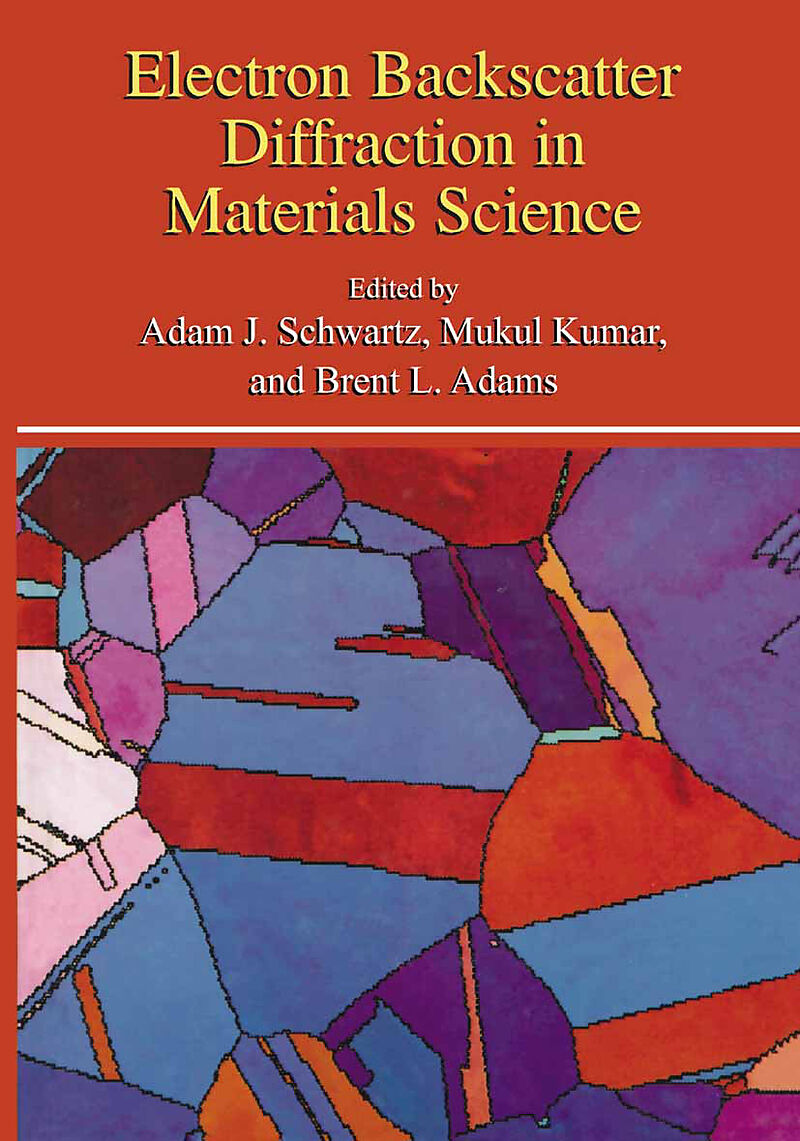Electron Backscatter Diffraction in Materials Science
Format:
E-Book (pdf)
EAN:
9781475732054
Genre:
Technik
Herausgeber:
Springer US
Anzahl Seiten:
339
Erscheinungsdatum:
29.06.2013
Electron backscatter diffraction (EBSD), when employed as an additional characterization technique to a scanning electron microscope (SEM), enables individual grain orientations, local texture, point-to-point orientation correlations, and phase identification and distributions to be determined routinely on the surfaces of bulk polycrystalline materials. The application has experienced rapid acceptance in metallurgical, materials, and geophysical laboratories within the past decade due to the wide availability of SEMs, the ease of sample preparation from the bulk, the high speed of data acquisition, and the access to complimentary information about the microstructure on a submicron scale. This entirely new second edition describes the complete EBSD technique, from the experimental set-up, representations of textures, and dynamical simulation, to energy-filtered, spherical, and 3-D EBSD, to phase identification, in situ experiments, strain mapping, and grain boundary networks, to the design and modeling of materials microstructures. Numerous application examples including the analysis of deformation microstructure, dynamic deformation and damage, and EBSD studies in the earth sciences provide details of this powerful materials characterization technique.
Klappentext
Crystallographic texture or preferred orientation has long been known to strongly influence material properties. Historically, the means of obtaining such texture data has been though the use of x-ray or neutron diffraction for bulk texture measurements, or transmission electron microscopy or electron channeling for local crystallographic information. In recent years, we have seen the emergence of a new characterization technique for probing the microtexture of materials. This advance has come about primarily through the automated indexing of electron backscatter diffraction (EBSD) patterns. The first commercially available system was introduced in 1994, and since then of sales worldwide has been dramatic. This has accompanied widening the growth applicability in materials scienceproblems such as microtexture, phase identification, grain boundary character distribution, deformation microstructures, etc. and is evidence that this technique can, in some cases, replace more time-consuming transmission electron microscope (TEM) or x-ray diffraction investigations. The benefits lie in the fact that the spatial resolution on new field emission scanning electron microscopes (SEM) can approach 50 nm, but spatial extent can be as large a centimeter or greater with a computer controlled stage and montagingofthe images. Additional benefits include the relative ease and low costofattaching EBSD hardware to new or existing SEMs. Electron backscatter diffraction is also known as backscatter Kikuchi diffraction (BKD), or electron backscatter pattern technique (EBSP). Commercial names for the automation include Orientation Imaging Microscopy (OIM(TM)) and Automated Crystal Orientation Mapping (ACOM).
Inhalt
1 The Development of Automated Diffraction in Scanning and Transmission Electron Microscopy.- 2 Theoretical Framework for Electron Backscatter Diffraction.- 3 Representations of Texture in Orientation Space.- 4 Rodrigues-Frank Representations of Crystallographic Texture.- 5 Fundamentals of Automated EBSD.- 6 Studies on the Accuracy of Electron Backscatter Diffraction Measurements.- 7 Phase Identification Using Electron Backscatter Diffraction in the Scanning Electron Microscope.- 8 Three-Dimensional Orientation Imaging.- 9 Automated Electron Backscatter Diffraction: Present State and Prospects.- 10 EBSD: Buying a System.- 11 Hardware and Software Optimization for Orientation Mapping and Phase Identification.- 12 An Automated EBSD Acquistion and Processing System.- 13 Advanced Software Capabilities for Automated EBSD.- 14 Strategies for Analyzing EBSD Datasets.- 15 Structure-Property Relations: EBSD-Based Material-Sensitive Design.- 16 Use of EBSD Data in Mesoscale Numerical Analyses.- 17 Characterization of Deformed Microstructures.- 18 Anisotropic Plasticity Modeling Incorporating EBSD Characterization of Tantalum And Zirconium.- 19 Measuring Strains Using Electron Backscatter Diffraction.- 20 Mapping Residual Plastic Strain in Materials Using Electron Backscatter Diffraction.- 21 EBSD Contra Tem Characterization of a Deformed Aluminum Single Crystal.- 22 Continuous Recrystallization and Grain Boundaries in a Superplastic Aluminum Alloy.- 23 Analysis of Facets and Other Surfaces Using Electron Backscatter Diffraction.- 24 EBSD of Ceramic Materials.- 25 Grain Boundary Character Based Design of Polycrystalline High Temperature Superconducting Wires.

Leider konnten wir für diesen Artikel keine Preise ermitteln ...
billigbuch.ch sucht jetzt für Sie die besten Angebote ...
Die aktuellen Verkaufspreise von 3 Onlineshops werden in Realtime abgefragt.
Sie können das gewünschte Produkt anschliessend direkt beim Anbieter Ihrer Wahl bestellen.
Loading...
Die aktuellen Verkaufspreise von 3 Onlineshops werden in Realtime abgefragt.
Sie können das gewünschte Produkt anschliessend direkt beim Anbieter Ihrer Wahl bestellen.
| # | Onlineshop | Preis CHF | Versand CHF | Total CHF | ||
|---|---|---|---|---|---|---|
| 1 | Seller | 0.00 | 0.00 | 0.00 |
